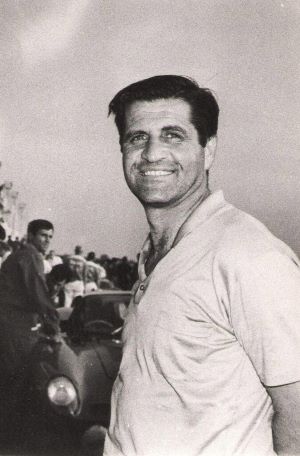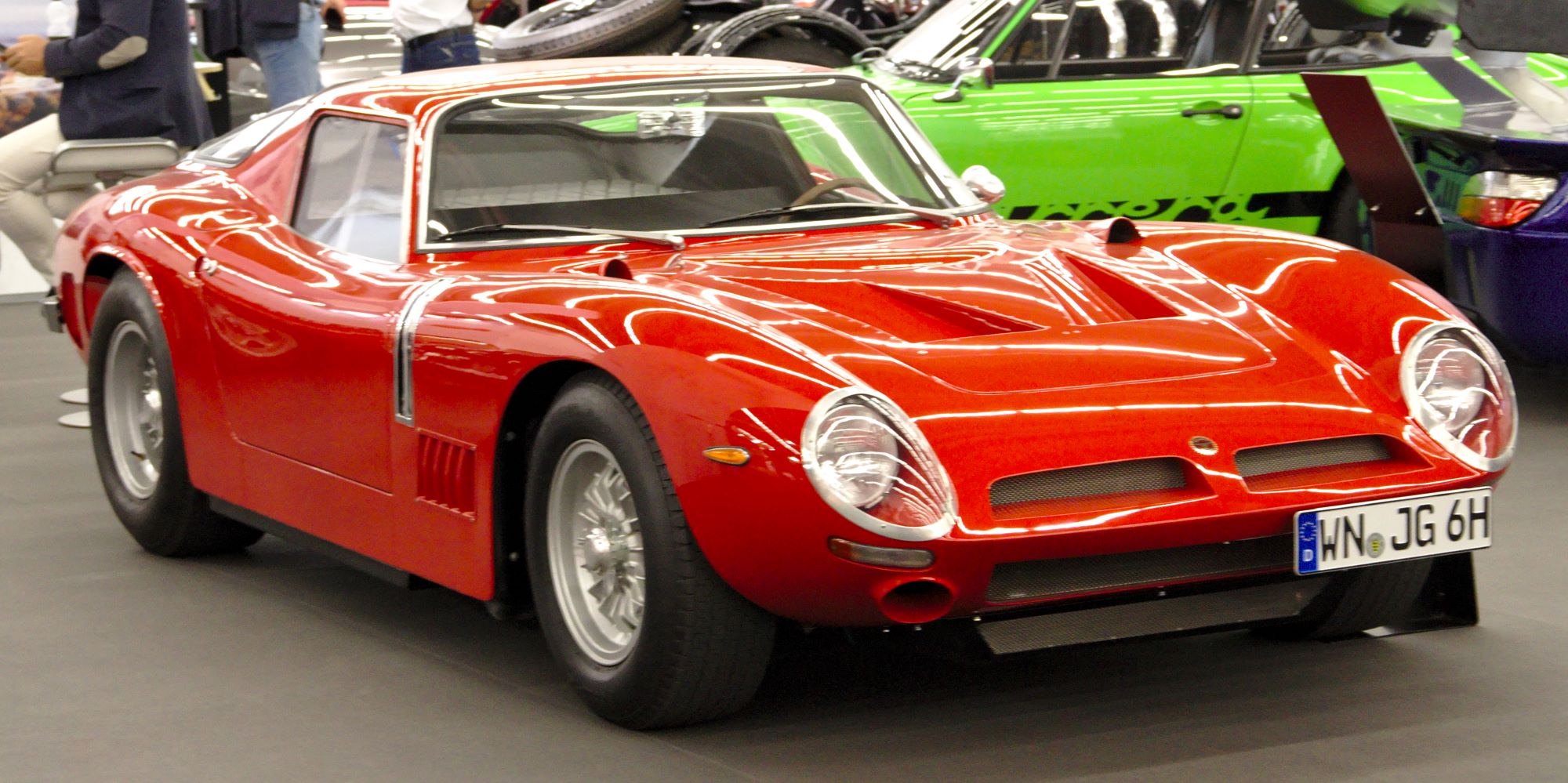
Bizzarrini is the Italian motorsport marque founded in 1964 by legendary engineer, Giotto Bizzarrini, an iconic name in Italian automotive history. The marque was reborn in 2020 under new ownership to bring together the finest design, craftsmanship and engineering excellence for a new generation of collectors and enthusiasts. The company operates in London, Geneva, Kuwait, Abu Dhabi and Dubai
| Categories |
| Bizzarrini cars (Latest-2024) |
| Websites |
| Bizzarrini.com |
Legendary Italian motorsport marque is revived for a new generation of collectors
The Pegasus Group is proud to present the rebirth of one of the most storied and iconic names in Italian automotive history, Bizzarrini. Bringing together the finest design, craftsmanship and engineering excellence, the revival ensures this legendary name lives on to compete on the global stage. Bizzarrini’s return will give a new generation of enthusiasts and collectors access to this iconic badge, helping it remain synonymous with the performance and passion of one man, Giotto Bizzarrini. Bizzarrini’s return is supported by a strong team of global automotive professionals. With operations in London, Geneva, Kuwait, Abu Dhabi and Dubai, the Group oversees a global portfolio with a special focus on luxury design, automotive and retail. Adept at building on heritage, stimulating creativity and promoting innovation and excellence, they have proven to be an experienced brand steward.
THE PEOPLE BEHINDTHE NEW BIZZARRINI BRAND
REZAM MOHAMMAD AL ROUMI
Rezam Mohammad Alroumi is the Group CEO of Alroumi Group Holdings, and Chairman of Pegasus Brands. He is the eldest son of Alroumi Group founder, Mohammad Yousef Abdulrahman Alroumi, a descendant of one of the region’s pre-eminent pearl trading families. From 2007 until 2018, Rezam Mohammad Al Roumi was a director, and briefly, Chairman of Aston Martin Lagonda, after Alroumi assembled and led the investor consortium that acquired a majority stake in the luxury sports car manufacturer. With a longstanding enthusiasm for luxury design and strong brands, Al Roumi is dedicated to ensuring that the heritage of unique brands stays dynamic and relevant in today’s world.
DR ULRICH BEZ, CHAIRMAN, BIZZARRINI
Chairman of Bizzarrini Dr Ulrich Bez is a distinguished veteran of the global car industry. Renowned for his high-profile role as CEO of Aston Martin Lagonda Ltd, Bez was born in Bad Cannstatt, Germany. He studied aircraft engineering at Stuttgart’s Technical University, and earned his doctorate from Berlin’s Technical University. He joined Porsche as an apprentice, ultimately becoming Head of Engineering. Amongst many other significant cars, Bez oversaw the last air-cooled Porsche 911, the 993, securing the famous 911’s ongoing legacy. Whilst at BMW, he led the Advanced Engineering Department before moving on to create and lead the BMW Technik engineering division, masterminding 8 cylinder engines as well as the very exclusive BMW Z1, the initial car in the successful BMW Z series. He subsequently became Vice President of Engineering at Daewoo Motors in Korea, launching four new cars in four years before joining Aston Martin Lagonda in 2000. Bez secured Aston Martin’s independence from Ford Motor Company, transforming it into a major luxury player representing the Best of British, and selling over 7,000 cars in 2007. Under his stewardship, enabled by the famous VH platform strategy, Aston Martin introduced the Vanquish, Vantage V8 and V12, DB9, Rapide, DBS and One-77 models, among others. As a passionate Nürburgring endurance racer with various class wins and podiums, Bez also brought the brand back into international motorsport at the highest level.
CHRISTOPHER SHEPPARD, CHIEF EXECUTIVE OFFICER
CEO of Pegasus Brands, Christopher Sheppard brings a comprehensive knowledge of the luxury automotive market, from marketing and branding programmes through to future product strategy. Formerly, the CEO of Aston Martin Middle East North Africa, he has extensive familiarity with the High Luxury Sector of the market.. As a Director of Aston Martin Works, Sheppard has overseen the triumphant return to low-volume, extremely high specification manufacturing, and has delivered hugely complex logistical projects across continents and cultures. Under his guidance, the Pegasus Group acquired the Bizzarrini name with the ambition of reviving this acclaimed brand for a new generation of discerning drivers and collectors

GIOTTO BIZZARRINI
Giotto Bizzarrini was born on the 6th June 1926 in Quercianella on the Etruscan Coast, just south of Livorno. As a child, he often dreamed of designing cars, later describing himself as having an ‘idea every minute.’ In his early twenties he worked as a mechanic, preparing Fiat engines for the Mille Miglia road race, which began on the roads of Central Italy in 1927. By 1937, the course expanded to take in the west coast, running through Livorno and Pisa. He saw the drama and intensity at first hand and believed racing was his destiny.
Bizzarrini went on to study mechanical engineering at the University of Pisa; during this time he built his very first car, the 1952 Fiat 500 Macchinetta Berlinetta. The fastback coupé was built on a Fiat 500 Topolino chassis, with a new cylinder head and twin carburettors boosted to provide 30hp – plenty of power for the small two-seater with its hand-made aluminium body. The young student presented the car as his graduation thesis in 1953 and it was very well received. On graduating, Bizzarrini’s first major job was at Alfa Romeo at their factory in Portello, Milan. He joined the company in 1954 and stayed there for three years, time which is best described as an apprenticeship to engineering excellence. Distinguishing himself as both a talented engineer and a supremely capable driver, Bizzarrini was able to effortlessly translate his vision from blueprint to track.
In 1957, Bizzarrini got his big break, and drove the Macchinetta to a job interview with Enzo Ferrari and his six-year old company, then in the process of rapid expansion. On seeing the Macchinetta, the elder statesman of racing was said to have been impressed by the young engineer’s courage. He won the role – that of a test driver with engineering skills. From the outset Bizzarrini parlayed the skills he had learned at Alfa into Ferrari’s vastly more complex and tailored operation. By the end of the decade, he had become Head of Experimental, Sport and GT Car Development, overseeing the creation of the Testa Rossa and transforming the Ferrari 250 SWB into the legendary 250 GTO to compete with Jaguar’s newly unveiled E-Type.
Throughout 1961, the Ferrari 250 GTO was developed rapidly and in secret, eventually proving itself in testing at Monza that year. Yet his achievement at Ferrari was short-lived; as the 250 GTO found favour on the track, Giotto Bizzarrini and his colleagues found themselves at Enzo’s mercy when they opposed the firing of Ferrari’s Sales Manager, Gerolamo Gardini. In what became known as the 1962 ‘Palace Revolt,’ Ferrari fired his rebellious key engineers in retaliation for their apparent disloyalty.
This event led directly to the foundation of Bizzarrini’s own company, Societa Autostar in Livorno. The engineering consultancy’s first commission was for a car to beat his own creation, the GTO. Commissioned by Count Giovanni Volpi di Misurata for his Scuderia Serenissima, the 250 SWB-based ‘Breadvan’ was aerodynamically shaped, aesthetically challenged and exceptionally competitive. Later that year, Lamborghini hired Bizzarrini to design their first bespoke engine. The result was a quad-cam all-aluminium 3.5 litre V12 of extraordinary power and longevity; it was at the heart of Lamborghini’s Miura and Countach and survived all the way through to the Murciélago of 2011.
The 1960s were a fertile time for Bizzarrini. He was also working closely with Renzo Rivolta on his new line of luxury performance cars, including the Iso Rivolta IR 300 and the Iso Grifo, both with bodywork by Giorgetto Giugiaro at Bertone. The performance variant of the latter, the Iso Grifo A3C, formed the basis of Bizzarrini’s next legendary creation, the 5300 GT. Styled by Giugiaro and refined by Piero Drogo of Carrozzeria Sports Cars (also responsible for the ‘Breadvan’), the 5300 GT was the culmination of a decade’s hard-won experience with some of the biggest names in Italian car design and engineering.
Bizzarrini’s obsession with performance kept his mind focused on the track, retaining the ultra-reliable, powerful and affordable Corvette V8 engine deployed in the ISO road cars. In 1965, the Bizzarrini 5300 GT, chassis 0222, competed in the Le Mans 24 Hours in the hands of French drivers Regis Fraissinet and Jean de Mortemart. Chassis 0222 ran the race at an average speed of 169km/h, winning the over-5-litre class and finishing ninth overall. After this triumph, Bizzarrini himself drove the race car back to Northern Italy from the Circuit de la Sarthe.
The following year, the purist Bizzarrini P538 was introduced, with a mid-engined layout and supremely minimal open Giugiaro bodywork. Changing race regulations put paid to the P538’s aspirations at Le Mans and the tough Italian industrial landscape made manufacturing increasingly difficult. Nevertheless, the company continued to innovate, albeit with the personality and eccentricity resulting from what was effectively a one-man design and engineering operation.
The 1968 Bizzarrini Manta was allegedly built on the race car underpinnings of an early P538. With bodywork by Giorgetto Giugiaro, then launching his new Italdesign studio, the Manta was a one-off concept that sat three abreast, a passenger on each side of the driver. Its sharp edges and high-tech detailing were a foretaste of designs to come.
Whether Strada or Corsa, closed or open, front or mid-engined, every car touched by Giotto Bizzarrini displayed a commitment to maximum performance and dynamics. His art was that of the engineer, the ability to shape and hone mechanical components so that – in the right hands – they could create magic. As the man behind Ferrari’s most legendary racing car, the engine that defined Lamborghini and some of the most exotic and muscular Italian sports and racing cars ever seen, Giotto Bizzarrini’s legacy is unassailable. His cars continue to live on as the embodiment of automotive passion.
Bizzarrini taught and worked at Rome University, developing advanced projects and designing, building, and developing his own sport cars. He was often quoted as saying: “I’m not a car designer, I am a worker”. On 23 October 2012, during the inauguration of the University of Florence’s new Design Campus in Calenzano, Professor Bizzarrini was given the Honoris Causa Degree in Industrial Design.
Bizzarrini died on 13 May 2023, at the age of 96.


